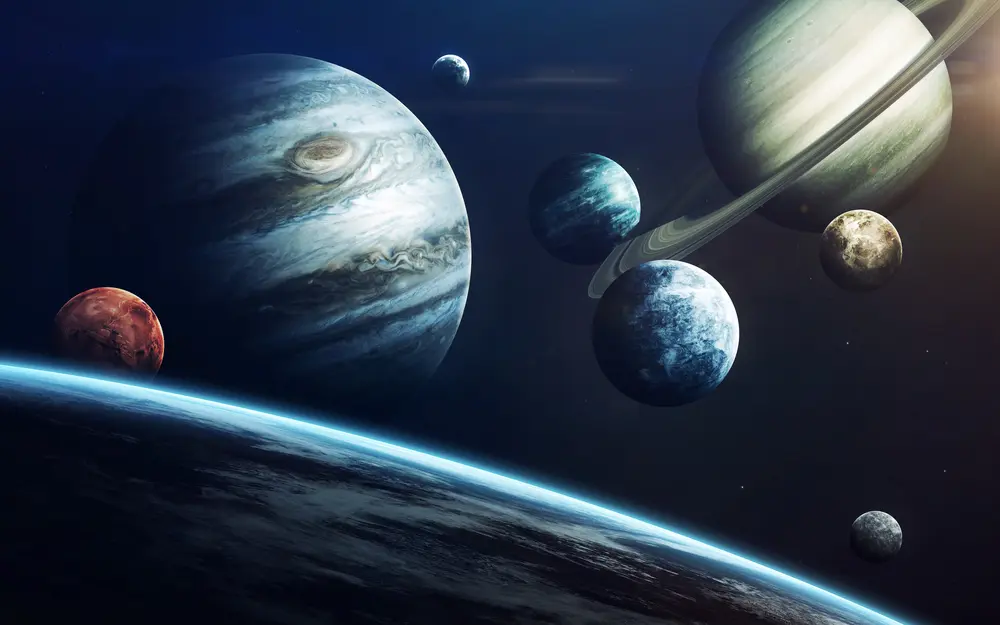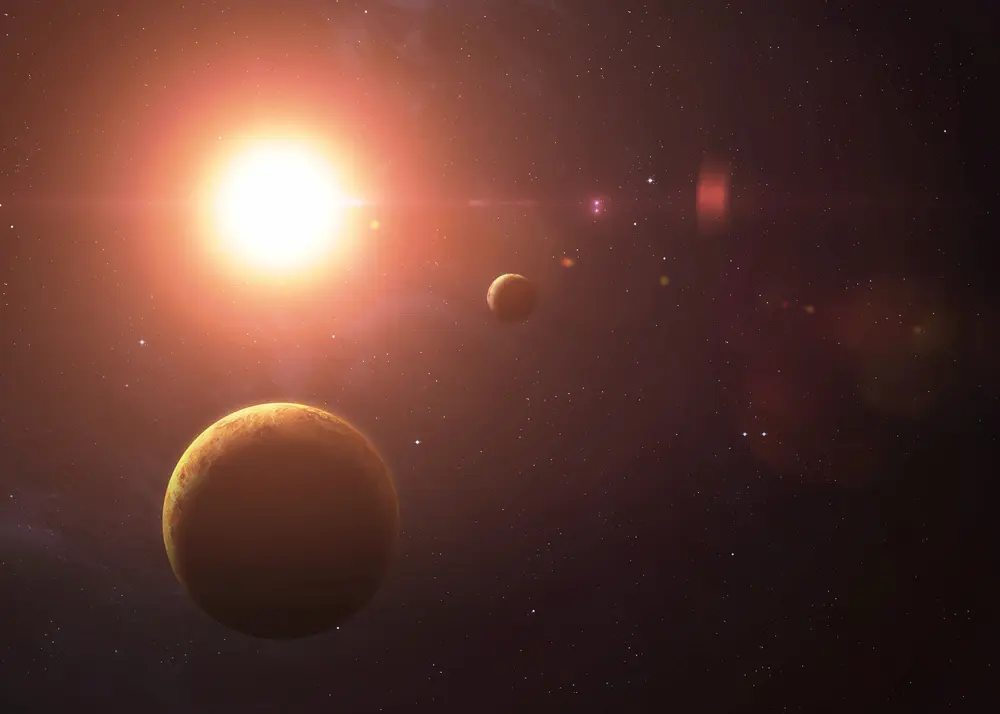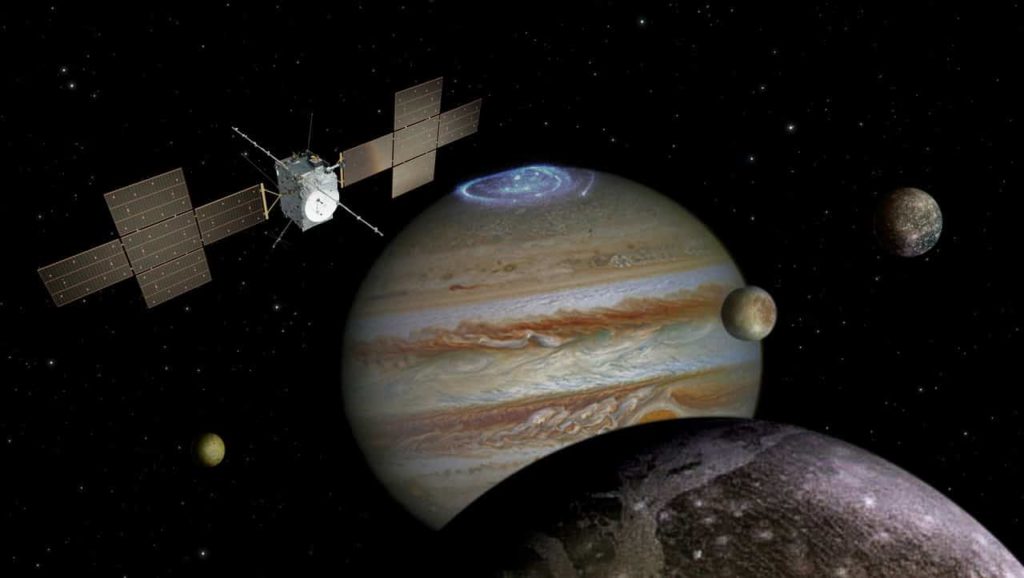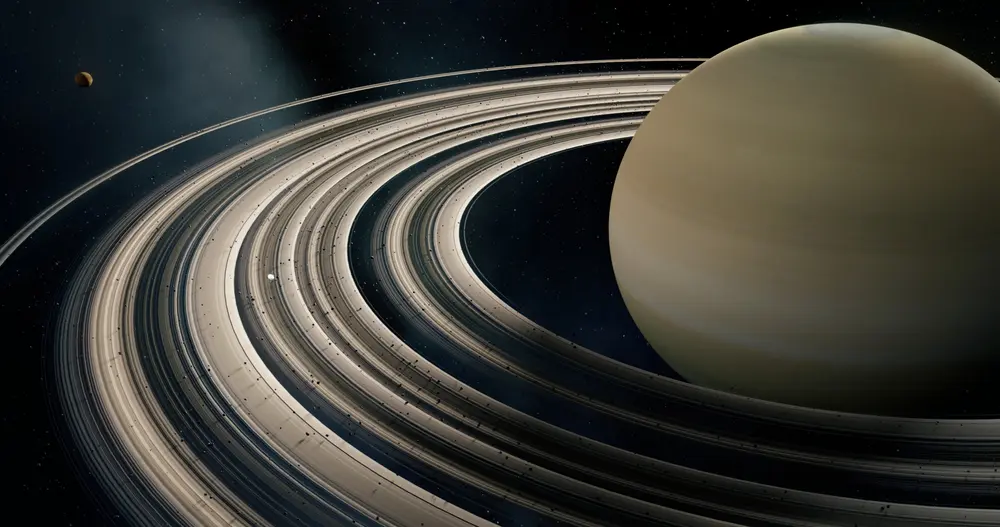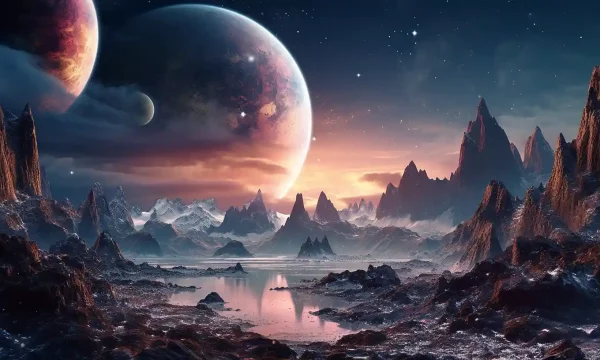
The Search For Earth-Like Exoplanets: 10 of the best candidates so far
Last Updated: August 29, 2023
As the number of confirmed exoplanets grows, we continue to wonder about what these planets are like. And while we may be attracted to the weirdest, coolest, and most non-Earth-like exoplanets, it’s only human to dream of a world that is like our own, that could potentially harbor life like ours.
Of the over 5,300 confirmed exoplanets as of May 2023, how many appear to be like our little blue marble?
Introduction/ Background
There has been heated discussion about what qualifies as an Earth-like planet, if we have any hope of identifying these qualities, and even if human survivability should be a requirement to be Earth-like. The typical attributes that we look for to qualify an exoplanet as Earth-like or potentially life-friendly are:
- Relatively small (about 0.8 to 1.9x the size of Earth and between 0.5 and 2x the mass of Earth), and therefore rocky
- Orbit in the habitable or “Goldilocks” zone of its star, a location where water can exist as a liquid form on a world’s surface and ideally a suitably thick atmosphere
However, this is a very bare-bones definition of Earth-like.
Even looking at Venus and Mars, which do fall within the first category and barely fall within the inner and outer edge of the habitable zone of the solar system respectively, do not provide an environment that makes them “Earth-like”.
We also have no planets within our solar system which are bigger than Earth, but smaller than Neptune so we don’t have a solid understanding of when a planet becomes too big to typically be a rocky planet.
Additionally, just because a planet lies within the zone for liquid water to exist, doesn’t mean it’s habitable for life. A red dwarf star would have a closer habitable zone, but being closer to the star has other concerns like UV radiation.
Ideally, to support life as we know it, the planet needs to have formed through similar processes and have similar geological interactions. Therefore, many astrobiologists and astronomers have suggested these additional qualifications to consider in addition to the two above to truly classify a planet as Earth-like:
- Possesses or possessed an atmosphere, ideally with similar elements such as oxygen, ozone, methane, water, and carbon dioxide.
- Volcanic interactions with the surface
- Past or present liquid water
- Life forms
Distance is also a factor. The further away the exoplanet is, the harder it will be to verify all of these data points, even as our technology improves. Simply finding an “Earth-like” exoplanet would be amazing for broadening our understanding of the universe and providing a valuable scientific comparison.
While the data is continually evolving based on new data, both of new possible exoplanets and updated information on confirmed ones, these are 10 of the best candidates for an Earth-like exoplanet as of May 2023. Some have more details than others depending on the current data that has been observed.
Gliese/GC 667 Cc
This potentially rocky planet lies in the habitable zone around a red dwarf star with an orbital period is about 28 days and there are 5 planets total in this system. It was discovered in 2011 using the radial velocity method.
Although its parent star is a red dwarf, it is part of the Gliese 667 triple star system about 22 light-years away in the Scorpius constellation.
Gliese 667 Cc has a mass of approximately 3.8 Earths, but a radius of about 1.77 Earths, meaning it is approximately 77% bigger than Earth, but almost 4 times as dense. It is located toward the inner edge of the habitable zone at 0.125 AU as it orbits a M-type, red dwarf, star as opposed to a yellow G2 star like our Sun. Gliese 667 Cc should absorb a similar, but slightly higher, amount of radiation than Earth, making it a little warmer than Earth.
Gliese 667 Cc is likely tidally locked, meaning one side of its hemisphere permanently faces the star constantly being scorched while the opposite side faces away, being dark and cold. Between these two intense areas, there might be a sliver of habitable areas where the temperature may be a minimum of 32 Fahrenheit or 0 Celsius for liquid water to exist.
Another point of difference and concern is its small eccentric orbit to its red dwarf which parent star may cause tidal heating up to 300 times of Earth due to flares from the parent star.
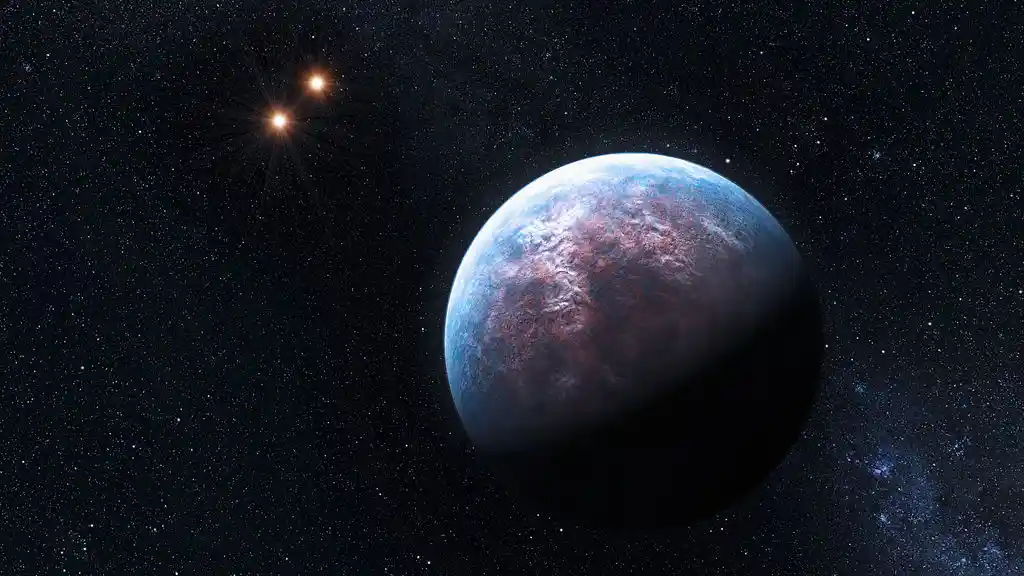
Kepler-452b
This was the first near-Earth-size world to be found in the habitable zone of a star that is similar in size to our sun at only 1.04 times our Sun’s mass and 1.11 times our Sun’s radius. It was discovered in 2015 using the transit method, lying 1,400 light-years away in the Cygnus constellation. There are currently no other confirmed planets in this system.
Kepler-452b has a mass of approximately 3.29 Earths and a radius of about 1.63 Earths with a better-than-even chance of being rocky. Kepler-452b is a little hotter than Earth with an equilibrium temperature of 17 Fahrenheit or -8 Celsius.
It is located within the habitable zone of its star which is about the same size and temperature as the Sun at almost the same distance as Earth at 1.046 AU with a year only 20 days longer than ours.
Despite being similar enough to Earth to be dubbed Earth 2.0 or Earth’s cousin, Kepler-452b does have several differences. Being nearly twice the size of Earth, it may have more active volcanoes and a thicker atmosphere.
It also orbits a star that is about 1.5 billion years older than ours and 20% more luminous, meaning Kepler-452b likely receives about 10% more energy from its star than Earth receives from the Sun as it is about 10% bigger.
It may be more similar to Venus due to these factors or will become more like Venus in the next 500 million years.
Kepler-186f
This exoplanet was the first Earth-sized planet discovered in the habitable zone of a red dwarf (on the outer edge of the habitable zone) about half the mass and size of our sun. It was discovered in 2014 using the transit method and lies about 500 light-years away in the Cygnus constellation with 4 other planets in the system.
Kepler-186f has a mass of about 1.71 Earths and a radius of about 1.17 Earths. In terms of temperature, Kepler-186f is colder than Earth and even Mars as it receives about one-third the energy from its star that we get from ours.
It does lie within the habitable zone as orbits its red dwarf star at approximately the same distance as Mercury in our solar system at .43 AU with an orbital period of about 130 days.
It could be a rocky terrestrial planet or a lower-density ocean planet with a thick atmosphere. Despite being similar in distance to Mercury, in terms of the habitable zone, it is more similar to Mars, on the outer edge of the habitable zone compared to Earth.
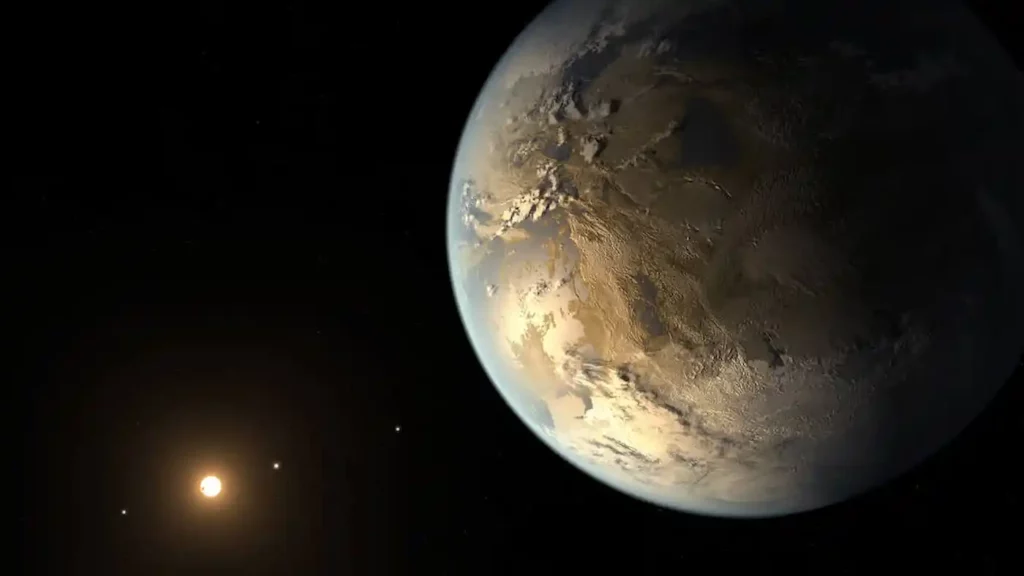
TOI 700 e and d
TOI 700 e (found in 2023) is an Earth-sized likely rocky planet with a mass of 0.82 Earths and about 95% of our radius orbiting the optimistic habitable zone (where liquid surface water could be present at some point in the planet’s history) of its small cool M-type red dwarf star about 42% the mass and size of our Sun.
It has an orbital period of about 28 days at 0.134 AU. The TOI system was found with TESS in the Southern constellation of Dorado about 100 light-years away and is one of the few systems discovered with multiple small habitable-zone planets.
There three other planets in the system: TOI 700 b,c, and d. TOI 700 d (discovered in 2020) orbits in the conservative habitable zone a little further away from e where both liquid water and an Earth-like atmosphere could exist over most of the planet’s lifetime.
It is about 1.25 times the mass of Earth and is only slight bigger at 1.07 times our radius. It sits at 0.16 AU from its parent star, completing its orbit in 37 days. TOI 700 b is also a small terrestrial planet, but too close to the star while c is a Neptune-like gas giant.
Kepler-69C
Found in 2013 with the transit method, Kepler-69 C is a super Earth (sometimes described as a “Super Venus” located almost 2,400 light-years away. It is about 70% larger than Earth and about 3.57 times as massive, meaning we are unsure if it is rocky or gaseous, but likely rocky.
It orbits its parent G-type star once every 242 days in a similar orbit to Venus at 0.64 AU, but the host star is about 80% as luminous as the Sun, making it in the habitable zone, but outside its inner edge meaning it is likely closer to Venus than Earth in terms of environment and temperature.
The parent star has about 80% of the mass of the Sun and is about 93% as big. There is one other confirmed planet in this system, a Neptune-like gas giant.
Kepler-1649 c
A computer algorithm originally misidentified it in the original data collection, but a reanalysis of Kepler’s data in 2020 identified it as a planet. Kepler-1649 c is a super Earth orbiting an M-type red dwarf in 19.5 days at 0.07 AU. The red dwarf sits about 300 light-years away.
It is similar in size to Earth at only 6% larger with a mass of only 20% more and orbiting in its star’s habitable zone, receiving about 75% of the light Earth does from the Sun since red dwarf is much weaker with only 20% the mass of our Sun and only 23% as big.
Kepler-1649 c seems to be the current exoplanet that is closest to Earth in temperature and size while also lying in the habitable zone of its system.
The other planet in this system (b) is also a super Earth just barely bigger than Earth at 1.017 times our radius with a mass just 3% more than ours and even closer to its star at 0.05 AU, orbiting in 8.7 days. It was discovered in 2017.
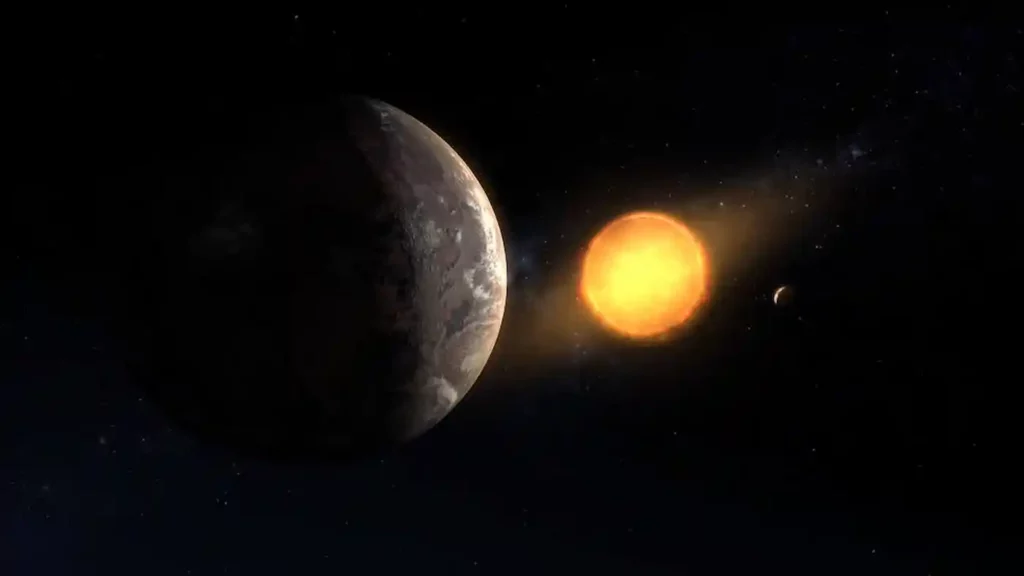
TRAPPIST-1e
The TRAPPIST-1 system contains 7 Earth-sized worlds and is the system which contains the most of these planets ever discovered in the habitable zone of a single star. The system lies 41 light-years away with a red dwarf only 12% as large as the sun with only 9% of the sun’s mass.
Water on most of these worlds is likely to have evaporated early in the system’s formation, but a 2018 study found that some of the planets could hold more water than Earth’s oceans.
TRAPPIST-1e is thought to be the most likely to support life as we know it, but TRAPPIST-1d, TRAPPIST-1f, and TRAPPIST-1g are also potentials.
TRAPPIST-1 e has a mass of 0.69 Earths and 0.92 the radius of Earth. Located at 0.03 AU from its star, it completes an orbit in 6.1 days. It was discovered in 2017 and has multiple subsequent observations by multiple telescopes.
Below you can see a few quick facts about the other planets in this system:
Name | Mass and Radius | Orbital Distance and Period | Notes |
TRAPPIST-1 d | Mass: 0.39x Earth
Radius: 0.79x Earth | 0.02 AU
4 days | Discovered in 2016
Likely tidally locked, but it is theorized that it could provide the conditions for liquid water near the terminator in between the hot day side and potentially ice-covered night side |
TRAPPIST-1 f | Mass: 1.04x Earths
Radius: 1.05x Earths | 0.038 AU
9.2 days | Discovered in 2017 |
TRAPPIST-1 g | Mass: 1.32x Earths
Radius: 1.13x Earth | 0.047 AU
12.4 days | Discovered in 2017 |
TRAPPIST-1 b | Mass: 1.37x Earths
Radius: 1.12x Earths | 0.012 AU
1.5 days | Discovered in 2016
James Webb Space Telescope observations: temperature above 445 F (229 C) |
TRAPPIST-1 c | Mass: 1.31x Earths
Radius: 1.10x Earth | 0.016 AU
2.4 days | Discovered in 2016 |
TRAPPIST-1 h | Mass: 0.33x Earth
Radius 0.76x Earth | 0.06 AU
18.8 days | Discovered in 2017 |
KOI-456.04
Discovered in 2020, this exoplanet just less than twice the size of Earth (1.9 times our radius) just over 3,000 light-years away orbits in the habitable zone of its sun-like parent star (1.1 times the radius of our Sun) Kepler-160. While other exoplanets already discussed are much closer in size to us than KOI-456.4, it is unique and eerily familiar in another way.
It orbits its sun-like star at about the same distance as Earth with an orbital period of 378 days and receives about 93% of the sunlight Earth receives from the Sun according to the data, making it the closest so far to being a double for our Earth-Sun relationship.
If the atmosphere is similar to Earth’s, the average temperature should be about 41 degrees F (5 degrees C) and there’s a good chance it could have similar surface conditions.
Kepler-160 already has two confirmed planets (b and c) which are larger than Earth and orbit much closer to the star, making habitability much less likely. In addition, c has a distorted orbit, leading many scientists to theorize yet another planet has yet to be discovered.
Astronomers have created a new physical model of stellar brightness variation that can help them determine likely planets and their orbits to help provide more specific targets for telescopes (current ones and the ESA’s upcoming PLATO space telescope scheduled to launch in 2026) to observe and discover using one of the official exoplanet detection methods, such as the transit method.
However, it hasn’t been fully confirmed yet and there is about a 15% chance that it is not actually a planet, but rather an error or statistical accident. More observations are needed, but astronomers are optimistic that it will fall into the same camp as most planetary candidates which are confirmed with later observations.
LP 890-9 planetary system (b and c)
LP 890-9 is a red dwarf less than 20% as massive and big as our Sun (0.12x the mass and 0.16x the radius) about 100 light-years away with 2 super Earth planets. The planets were discovered in 2022 using TESS.
LP 890-9 b is the inner world of the system, orbiting at 0.019 AU, completing an orbit in 2.7 days. While it is only about 32% bigger than Earth it is 13.2 times as massive with an estimated temperature of 253 degrees F (123 C) so likely too hot to live on.
LP 890-9 c lies at 0.04 AU with an orbital period of 8.5 days. Similar to its sister planet, while its radius is only 37% bigger than Earth’s, it is 25.3 times as massive. It is likely cold with estimated temperatures of 30 degrees F (- 1.1 C) but still within the inner habitable zone.
The daytime hemisphere receives about 90 percent of the heat and light of Earth according to the data observed. If the atmosphere is thick enough, its environment may be closer to Venus than Earth. It was discovered by a ground-based telescope survey, the Search for habitable Planets EClipsing Ultra-cOOl Stars (SPECULOOS) in October 2022 while confirming LP 890-9b.
Both candidates’ classification as “Earth-like” would depend on the atmospheres to know the real temperatures of these planets. It is also important to note that these are relatively new discoveries and therefore will require further data to confirm these points.
Proxima Centauri b
As mentioned earlier, distance is an important factor if we ever want to travel there. This means that a closer exoplanet, even if it’s not as much like Earth as a further one, might be the better answer, especially if we can change the environment to make it more suitable for human life (often referred to as terraforming).
At just 4 light-years away, the closest known exoplanet is Proxima Centauri b, orbiting the closest star to our own, Proxima Centauri which is part of the Alpha Centauri system of stars located near the Southern Cross constellation. Proxima Centauri b was discovered in 2016 and has a mass 1.07 times Earth’s and an estimated radius 1.03 times that of Earth’s.
It is in the habitable zone, orbiting at 0.049 AU around its red dwarf parent star (0.12x the mass and 0.14 times the radius of our sun) in 11.2 days, but exposed to extreme UV radiation due to its close proximity to Proxima Centauri, making its habitability questionable, to say the least.
While other planets on this list may be closer to Earth in various characteristics, its close proximity does make it an enticing prospect for further scientific study on a variety of factors. While neither Voyager 1 or 2’s trajectory will take them to Proxima Centauri, it would take them about 75,000 years to reach our closest star. If New Horizons were to travel to Proxima Centauri, it would take about 54,400 years (depending on the number of flybys, gravity assists, etc.).
However, a new method of space travel known as a solar sail could potentially reach our nearest star system in as little as 20 years by achieving 20% the speed of light according to researchers at Penn Engineering and the Breakthrough Starshot Initiative. Utilizing lasers, the sail made of ultrathin sheets of aluminum oxide and molybdenum disulfide about 10 feet (3 meters) wide would propel a probe the size of a microchip.
Currently, the solar sail is only a design grounded in real materials but the next plan is to make small-scale versions and test them. But the ultimate goal of this solar sail project is to head to the Alpha Centauri system specifically to aid the study of another star up close and its exoplanets.
So, who knows, maybe in the next fifty years, we’ll have a probe in the Alpha Centauri system studying Proxima Centauri B.
Conclusion
All in all, our recent innovations in exoplanet detection and data gathering capabilities has greatly increased the number of exoplanets discovered and those that are closer to Earth. Some are closer to Earth in size, temperature, and distance from their star, but so far we haven’t found one that appears to have all of these characteristics.
The James Webb Space Telescope will continue to help us see further and with more detail, providing vital data (including the thus-far elusive atmospheric data) about these targets. It has already performed observations of several exoplanets and will continue to do so.
As the number of observations increase and the technology continues to improve, this list will continue to change and become more specific. Ultimately, many of the qualities to confirm a planet as “Earth-like may continue to remain elusive, but we weren’t even sure we could confirm an exoplanet in the early 1990s and it took another decade for the field to be seen as a valuable part of scientific research by most astronomers.
While this list is extremely exciting, who knows what we can discover in the next decade?

Sarah Hoffschwelle is a freelance writer who covers a combination of topics including astronomy, general science and STEM, self-development, art, and societal commentary. In the past, Sarah worked in educational nonprofits providing free-choice learning experiences for audiences ages 2-99. As a lifelong space nerd, she loves sharing the universe with others through her words. She currently writes on Medium at https://medium.com/@sarah-marie and authors self-help and children’s books.
Wow! There's more to read 🚀
This page is part of our collection of astronomy articles. If you enjoyed the read, then you’ll love the following articles.
